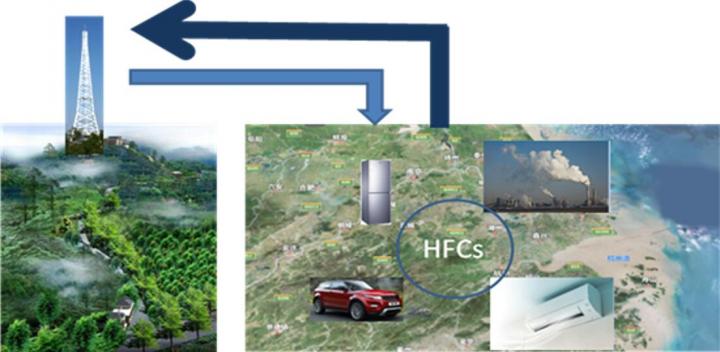
Credit: Bo Yao
Hydrofluorocarbons (HFCs) have been widely used as substitutes for ozone-depleting substances–for example, hydrochlorofluorocarbons (HCFCs) and chlorofluorocarbons (CFCs). Though HFCs have no impact on the ozone layer, they are also long-lived potent greenhouse gases with global warming potentials as high as CFCs, meaning HFCs are regulated by both the Montreal Protocol as well as the Kyoto Protocol. China is a major consumer of HFCs around the world. How to estimate HFC emissions as accurately as possible is therefore a key issue to understand regional contributions, especially for potential emission source areas.
In a recently published study in Advances in Atmospheric Sciences, Dr. Bo Yao from the China Meteorological Administration worked with local scientists in Zhejiang Province, and together they estimated the emissions of HFCs in the Yangtze River Delta (YRD) region by a tracer ratio method for the period 2012-2016.
“The YRD region is a fast-growing region in China with rapid urbanization and industrialization,” explains Dr Yao, who is the Chief Scientist of greenhouse gases at the Meteorological Observation Center of the China Meteorological Administration. Dr Yao further explains why the YRD was selected as the target of their study: “Rapid economic growth has been partly driven by the expanding manufacturing sector, including the fluorine chemical industry, production of electronics, air conditioners, refrigerators and automobiles, which would result in a large amount of HFC emissions.”
Yao’s team chose CO as a tracer to estimate the HFC emissions. “We employed the tracer ratio method, for it is more objective than the bottom-up inventory approach and easier than the top-down method by inverse modeling,” he adds. the team found that the YRD contributes around one third of the national total HFC CO2-equivalent emissions. The emissions intensity of HFCs in this area is also higher than both national and global levels, in terms of per capita, per unit area, or per unit GDP.
Ten HFC species were studied, among which HFC-23 was found to contribute approximately two thirds of all HFC emissions in terms of CO2-equivalent emissions in the YRD. “HFC-23 is a byproduct from the fluorine industry, or very limited fluorine chemistry plants, in the YRD. If HFC-23 emissions were totally eliminated, the HFC CO2-equivalent emission in the YRD would drop down obviously, and the emissions intensity of the YRD would be lower than national and global levels. So, HFC-23 is the key chemical when considering the mitigation potential of HFCs in the YRD, or even in China as a whole,” suggests Yao.
###
Media Contact
Ms. Zheng Lin
[email protected]
Related Journal Article
http://dx.




